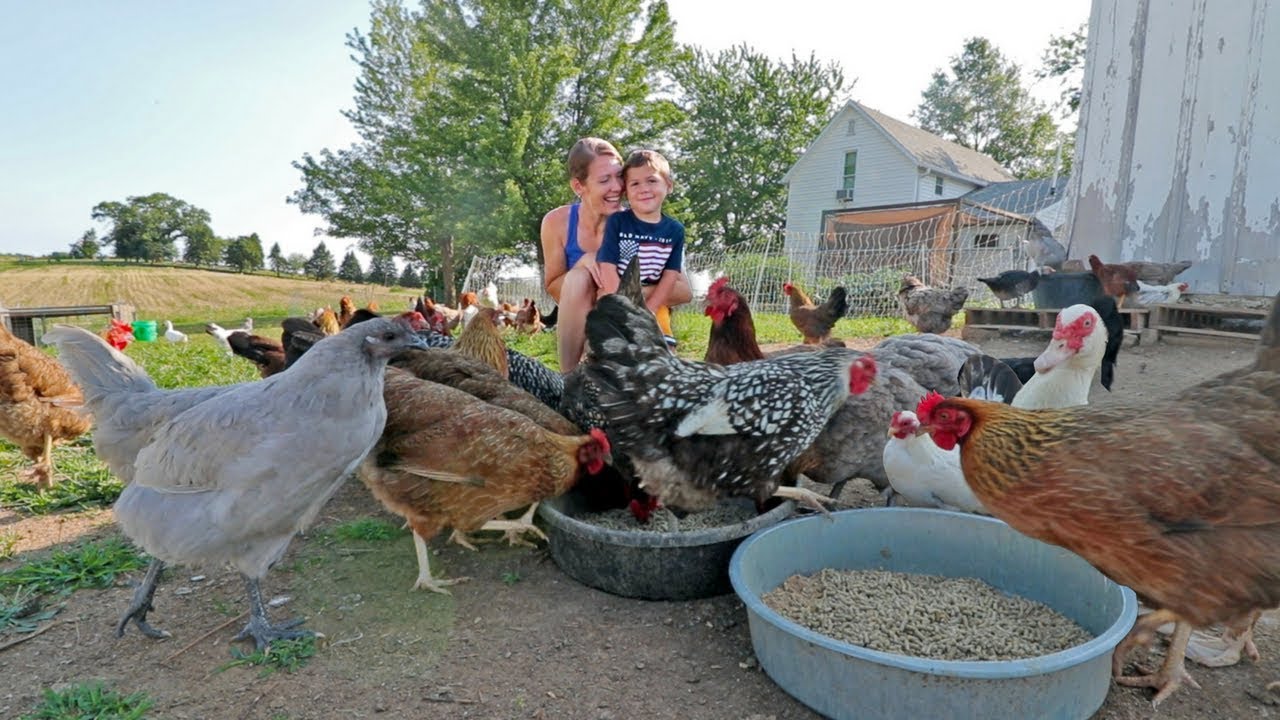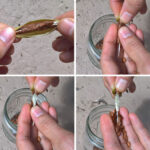Have you ever seen a chicken revel in the simple pleasure of a dust bath? It’s quite the spectacle to behold. Picture Iman, the chicken, with joyful abandon, flopping, flapping, and tossing around in a mixture of dust, sand, and ash. This isn’t a sign of distress; rather, it’s an instinctual practice that serves as self-care, a ritual as vital for their well-being as a shower and yoga might be for us.
What is a chicken dust bath?
At the core of poultry hygiene lies the chicken dust bath, an intriguing behavior observed in these feathered creatures. A dust bath is essentially a natural cleansing method that chickens use to maintain their feather and skin health.
The process involves the bird finding or creating a shallow pit in dry, fine dirt or sand and then rolling, shaking, and tossing the material over its body. As unusual as it might seem, this serves to remove excess oil, mites, and other parasites that may be lurking in their plumage.
Chickens have been engaging in this practice for centuries, and it’s a sight to see. It’s both a practical grooming habit and a moment of pure enjoyment. Observing Iman’s lively dust-bathing displays the simple joys and self-care routines in the animal kingdom.
Why do chickens take dust baths?
Dust bathing is more than just a whimsical pastime for chickens; it’s an essential part of their grooming routine and serves multiple purposes in promoting chicken health. Why is a dust bath essential for chickens? Here’s why:
- Parasite Control: Dust bathing helps chickens keep parasites like mites and lice at bay.
- Skin Protection: It also helps to absorb excess moisture and oils that can attract dirt and bacteria.
- Feather Maintenance: The fine dust particles help maintain the integrity of their feathers by providing a way to align them correctly.
Given these vital benefits, it’s clear that dust bathing is not just a quirky behavior but a crucial wellness ritual for chickens.
What materials are best for a chicken dust bath?
The joy of a chicken taking a dust bath can only be maximized with the right materials. While chickens aren’t too fussy, certain substances can enhance the effectiveness of their dust baths.
Sand, dust, and ash are among the most commonly used and recommended materials. They are granular enough to get into the feathers and against the skin to do their job. Diatomaceous earth is also a popular addition as it’s known to further help control parasites.
Ensuring that the materials are dry and easily accessible will provide your chickens with the perfect tools to carry out their self-care ritual.
How to create a chicken dust bath container?
Creating a designated dust bath container can help to contain the mess and offer a go-to spot for your chickens to indulge in their grooming. Here’s how you can set one up:
- Choose a large, shallow container that’s easy for your chickens to get in and out of.
- Fill it with a mix of sand, soil, and ash – the components of an ideal dust-bathing substance.
- Add a bit of diatomaceous earth for mite and lice prevention.
- Place the container in a sheltered area to keep the materials dry.
With these steps, your chickens will have a perfect spot to take a dust bath whenever they please.
Where should you set up a chicken dust bath?
Location is key when it comes to setting up a dust bath for your chickens. You’ll want to choose a spot that’s both appealing to them and convenient for you. The best place is a dry, sheltered area that’s protected from the elements, yet accessible for the chickens throughout the day.
Some owners prefer to place the dust bath near the chicken coop, while others choose a more central location in the yard where the chickens like to congregate.
Observing a chicken take a dust bath in the right spot can add a touch of whimsy to your backyard and ensure your chickens are happy and healthy.
What benefits do chickens get from dust bathing?
Dust bathing is more than just a fun activity; it’s a crucial component of a chicken’s health regimen. The act of dust bathing provides several benefits that keep chickens in good shape:
- Feather health is maintained by the cleansing action of the dust.
- It assists in keeping skin irritation and infections at bay.
- The behavior is a natural stress reliever and contributes to the emotional well-being of chickens.
- Dust baths can prevent infestations of pests that could otherwise impact a chicken’s health.
These aspects underscore the multifaceted importance of the behavior, illustrating that it’s more than just a quirky chicken habit—it’s pivotal for their overall wellness.
How to encourage your chickens to dust bathe?
If your chickens aren’t naturally taking to dust bathing, there are ways to encourage this beneficial behavior. Start by providing an inviting dust bath container filled with the right materials. Place it in an area where your chickens spend a lot of time to pique their interest.
Observing flock mates can often trigger the behavior in other chickens, establishing a communal spot for dust bathing might encourage more to take part. Additionally, keeping the dust bath clean and dry will make it more appealing to your chickens.
Incorporating this practice into their routine is essential for their grooming habits and contributes greatly to chicken health.
Related questions about chicken dust baths
Do chickens take dust baths?
Yes, chickens naturally take dust baths and have been doing so since they were first domesticated. This behavior is an instinctual part of their grooming process and is vital for their health.
Watching a chicken take a dust bath for the first time can be quite endearing and is a sign that your chicken is practicing good self-care.
What is the best thing to put in a chicken dust bath?
The best thing to put in a chicken dust bath is a mix of sand, soil, and ash. This combination mirrors the natural environment chickens would seek out in the wild and provides the abrasive action necessary for an effective cleanse.
Diatomaceous earth is also recommended by many chicken owners for its added benefits in controlling pests.
What does a chicken dust bath look like?
A chicken dust bath typically looks like a chicken rolling around in the dirt, creating a cloud of dust. They often kick their legs and flap their wings vigorously, covering themselves thoroughly with the dry material. The action is vigorous and full of energy—truly a sight to behold!
Where is the best place to put a chicken dust bath?
The best place to put a chicken dust bath is in a dry, sheltered area near their coop or in a spot where they like to gather during the day. Accessibility and protection from the elements are key factors in choosing the ideal location.
To enhance your understanding of this behavior, check out this video here where you can watch a chicken delight in a dust bath.
The simple act of a chicken taking a dust bath is an enchanting and educational spectacle, revealing the natural instincts and needs of these endearing backyard birds. Through understanding and providing for these needs, we not only ensure their health and happiness but also enrich our own experiences as caretakers and observers of their world.






